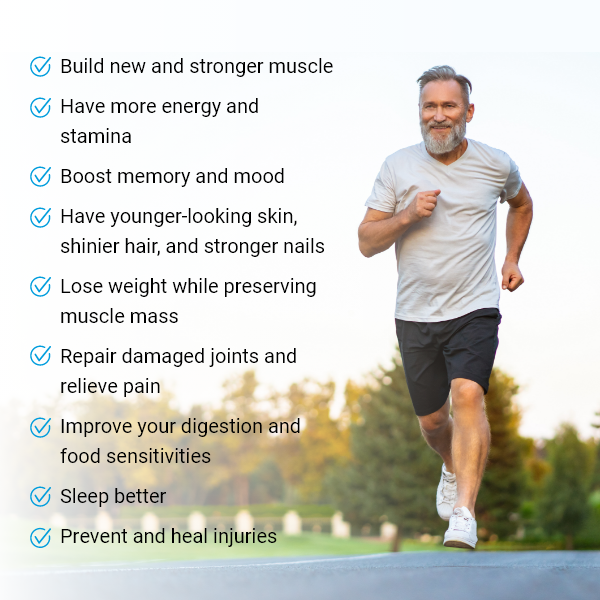Why Muscle Loss in Aging Is Often Overlooked – And What Can Be Done About It
As we age, most people expect to notice changes in energy, flexibility, and even memory. But there is one silent change happening inside the body that often goes unnoticed until it becomes a serious concern: muscle loss.
This natural process, known as sarcopenia, starts as early as age 40 and accelerates after 60. Studies show that adults can lose up to 8% of their muscle mass per decade – even if they remain active.
Why Muscle Matters More Than You Think
Muscles are not just about strength or appearance. They play a critical role in:
Balance and mobility – reducing the risk of falls.
Metabolism – helping maintain a healthy weight.
Energy levels – supporting daily activities without fatigue.
Independence – making it possible to live life on your own terms.
When muscle mass declines, even simple tasks like climbing stairs, carrying groceries, or getting up from a chair can become challenging.
The Hidden Problem: Diet Alone May Not Be Enough
Many people assume eating more protein is the solution. While protein is important, the body’s ability to break down and absorb it declines with age. This means that even if older adults eat a protein-rich diet, their muscles may not get the full benefit.
Scientists have been studying this gap for years – and have identified a group of essential nutrients that could help bridge it.
The Role of Essential Amino Acids
Amino acids are the “building blocks” of protein. They are directly responsible for repairing, maintaining, and building muscle tissue. Unlike general protein intake, certain amino acids can be absorbed quickly and used more efficiently by the body.
Recent clinical studies suggest that specific blends of amino acids may support muscle health in ways ordinary protein shakes cannot.
What Experts Are Exploring

In the field of nutritional science, there’s growing interest in advanced formulas designed for older adults. These blends often combine essential amino acids in precise ratios that mirror the body’s needs.
Preliminary findings point to promising benefits, including:
Helping preserve lean muscle.
Supporting strength and mobility.
Promoting overall vitality in aging.

